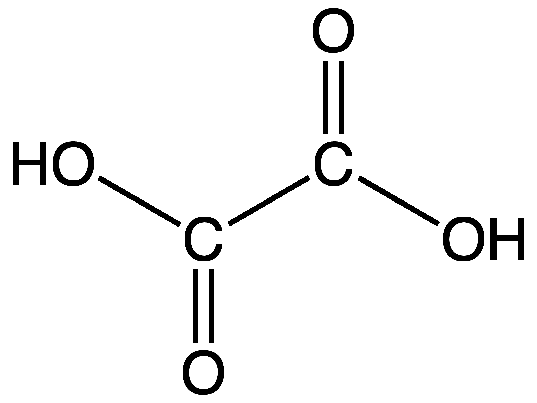Rhubarb
Rhubarb is a vegetable that is mainly grown in North America and Europe. The plant contains oxalic acid, about 570-1,900mg per 3.5oz. The rhubarb leaves contain the most oxalic acid. .5-1% of each leaf is made of oxalate. The rhubarb stalk contains a very little amount of oxalate. Rhubarb stalks are commonly used in baking cobblers or pies. They are known to be a very tart and acidic vegetable. Rhubarb also contains fiber, vitamin C, and vitamin K.
Oxalate
Oxalate is a compound that is made when oxalic acid binds with another mineral. Some examples are calcium oxalate and iron oxalate. This process  takes places in the kidney. The kidney can get rid of small amount of oxalate. When oxalate binds to another mineral, it can form crystals which lead to kidney stones. Reduced mineral absorption can be caused by oxalate. When oxalate binds with other minerals it can prevent the body from absorbing them.
takes places in the kidney. The kidney can get rid of small amount of oxalate. When oxalate binds to another mineral, it can form crystals which lead to kidney stones. Reduced mineral absorption can be caused by oxalate. When oxalate binds with other minerals it can prevent the body from absorbing them.
Symptoms of oxalate poisoning
Oxalate poisoning is uncommon when it comes to rhubarb consumption. Earlier I mentioned rhubarb contains between 570-1900mg of oxalate per 3.5 oz of rhubarb. According to Heathline, ” A lethal does of oxalate would be 26.3 grams of oxalate for 154 pound person.” So a person would have to eat quite a bit of rhubarb to be poisoned. While rhubarb poisoning is rare, the most common symptom is kidney stones. When the body does not have much urine and has a large amount of oxalate, kidney stones can form. Most small stones can be broken down by the gut or can be passed with few to no problems. Larger kidney stones can result in severe pain, nausea and can cause blood in the urine.
Hyperoxaluria is another symptom of oxalate poisoning. Hyperoxaluria is caused when there is too much oxalate in the urine. It can be caused by eating too much oxalate, an intestinal disease, or it can be a genetic disorder. Hyperoxaluria can cause the kidneys to fail if they have too much oxalate. If the kidneys fail it can cause oxalate to be deposited into organs, bones and blood vessels. The first symptoms of hyperoxaluria are kidney stones. The symptoms of kidney stones include pain in area below ribcage in the back and does not go away, blood in urine, sudden and severe back pain, pain when urinating, frequent urge to urinate, and fever or chills. If left untreated it can cause kidney failure, and can also harm the function of the neurological system and the connective tissue.
References:
Farthing, J. (2019, June 5). What is rhubarb? What to know about the superfood. Eat This Not That. Retrieved September 19, 2021, from https://www.eatthis.com/what-is-rhubarb/
Mandl, E. (2020, March 17). Are rhubarb leaves poisonous? Healthline. Retrieved September 19, 2021, from https://www.healthline.com/nutrition/rhubarb-leaves#oxalic-acid
Spritzler, F. (2017, June 3). Oxalate (oxalic acid): Good or bad? Healthline. Retrieved September 19, 2021, from https://www.healthline.com/nutrition/oxalate-good-or-bad
Mayo Foundation for Medical Education and Research. (2021, July 14). Hyperoxaluria and oxalosis. Mayo Clinic. Retrieved September 19, 2021, from https://www.mayoclinic.org/diseases-conditions/hyperoxaluria/symptoms-causes/syc-20352254